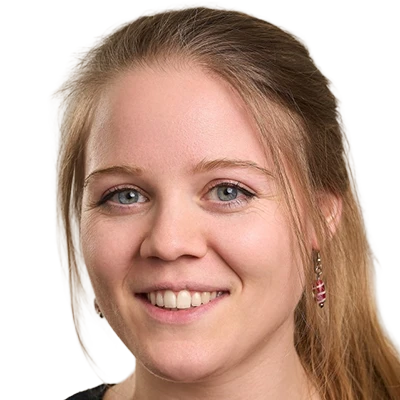Research Group Thomas Seidl
Thomas Seidl
is Professor for Computer Science and head of the Database Systems and Data Mining AI Lab at LMU Munich and the Spokesperson of the Munich Center for Machine Learning.
His fundamental research on data mining and database technologies with application domains in engineering, business, life science and humanities yielded more than 400 scientific publications so far. His research focuses on process mining, limited-label learning, clustering, active learning, and multimodal learning. At LMU Munich, Thomas Seidl serves as a Board Member of the Institute for Informatics and co-leads the Elite Master Program in Data Science. He is also a Board Member of the Leibniz Supercomputing Center (LRZ) in Garching, co-directs the Fraunhofer ADA Lovelace Center at LMU, and is the Spokesperson for the ZD.B/BIDT Innovation Lab for Students.
Team members @MCML
PostDocs
PhD Students

David Winkel
→ Group Thomas Seidl
Database Systems, Data Mining and AI
Recent News @MCML
Publications @MCML
2026
PRSM: A Measure to Evaluate CLIP's Robustness Against Paraphrases.
MMM 2026 - 32nd International Conference on Multimedia Modeling. Prague, Czech Republic, Jan 29-31, 2026. To be published. Preprint available. arXiv
2025
Does Machine Unlearning Truly Remove Knowledge?
Lock-LLM @NeurIPS 2025 - Lock-LLM Workshop: Prevent Unauthorized Knowledge Use from Large Language Models at the 39th Conference on Neural Information Processing Systems. San Diego, CA, USA, Nov 30-Dec 07, 2025. To be published. Preprint available. URL
Anomaly Detection by an Ensemble of Random Pairs of Hyperspheres.
NeurIPS 2025 - 39th Conference on Neural Information Processing Systems. San Diego, CA, USA, Nov 30-Dec 07, 2025. To be published. Preprint available. URL
Human Uncertainty-Aware Reliable Data Selection and Efficient Annotation for Visual Question Answering.
ReliableML @NeurIPS 2025 - Workshop on Reliable ML from Unreliable Data at the 39th Conference on Neural Information Processing Systems. San Diego, CA, USA, Nov 30-Dec 07, 2025. To be published. Preprint available. URL
Probabilistic Framework for Robustness of Counterfactual Explanations Under Data Shifts.
ReliableML @NeurIPS 2025 - Workshop on Reliable ML from Unreliable Data at the 39th Conference on Neural Information Processing Systems. San Diego, CA, USA, Nov 30-Dec 07, 2025. To be published. Preprint available. URL
MNN-Closure Meets Local Maxima: A Double-Knee Approach to Anomaly Detection.
ICDM 2025 - 25th IEEE International Conference on Data Mining. Washington DC, USA, Nov 12-15, 2025. To be published.
MotiVAtor: Analyzing Physical Activity Study Data in Lab and Life through Visual Analytics.
VAHC @VIS 2025 - 16th workshop on Visual Analytics in Healthcare at the IEEE Visualization Conference. Vienna, Austria, Nov 02-07, 2025. To be published. Preprint available. PDF
DocSLM: A Small Vision-Language Model for Long Multimodal Document Understanding.
Preprint (Nov. 2025). arXiv
SHAining on Process Mining: Explaining Event Log Characteristics Impact on Algorithms.
ICPM 2025 - 7th International Conference on Process Mining. Montevideo, Uruguay, Oct 20-24, 2025. DOI
Introducing k-traceoids: A Structure-Preserving Trace Clustering Framework.
ML4PM @ICPM 2025 - 6th International Workshop on Leveraging Machine Learning in Process Mining at the 7th International Conference on Process Mining. Montevideo, Uruguay, Oct 20-24, 2025. PDF
When and Where do Events Switch in Multi-Event Video Generation?
LongVid-Foundations @ICCV 2025 - 1st Workshop on Long Multi-Scene Video Foundations: Generation, Understanding and Evaluation at the IEEE/CVF International Conference on Computer Vision. Honolulu, Hawai’i, Oct 19-23, 2025. To be published. Preprint available. arXiv
LeapFactual: Reliable Visual Counterfactual Explanation Using Conditional Flow Matching.
Preprint (Oct. 2025). arXiv
SVAG-Bench: A Large-Scale Benchmark for Multi-Instance Spatio-temporal Video Action Grounding.
Preprint (Oct. 2025). arXiv
Human Uncertainty-Aware Data Selection and Automatic Labeling in Visual Question Answering.
Preprint (Oct. 2025). arXiv
Towards Trace Variant Explainability.
ADBIS 2025 - European Conference on Advances in Databases and Information Systems. Tampere, Finland, Sep 23-26, 2025. DOI
Going Offline: An Evaluation of the Offline Phase in Stream Clustering.
ECML-PKDD 2025 - European Conference on Machine Learning and Principles and Practice of Knowledge Discovery in Databases. Porto, Portugal, Sep 15-19, 2025. DOI GitHub
Towards Explainable Deep Clustering for Time Series Data.
TempXAI @ECML-PKDD 2025 - Workshop Explainable AI for Time Series and Data Streams at European Conference on Machine Learning and Principles and Practice of Knowledge Discovery in Databases. Porto, Portugal, Sep 15-19, 2025. To be published.
Social Impact of LLMs: The Ups, the Downs and the Uncharted Waters.
Preprint (Sep. 2025). DOI
The Denario project: Deep knowledge AI agents for scientific discovery.
Preprint (Sep. 2025). arXiv GitHub
BEST: Bilaterally Expanding Subtrace Tree for Event Sequence Prediction.
BPM 2025 - 23rd International Conference on Business Process Management. Seville, Spain, Aug 31-Sep 05, 2025. DOI
Enhancing Robustness of Autoregressive Language Models against Orthographic Attacks via Pixel-based Approach.
Preprint (Aug. 2025). arXiv
Weakly Supervised Anomaly Detection via Dual-Tailed Kernel.
ICML 2025 - 42nd International Conference on Machine Learning. Vancouver, Canada, Jul 13-19, 2025. URL
Open Source Planning & Control System with Language Agents for Autonomous Scientific Discovery.
ML4Astro @ICML 2025 - Machine Learning for Astrophysics at the 42nd International Conference on Machine Learning. Vancouver, Canada, Jul 13-19, 2025. PDF
Which LIME should I trust? Concepts, Challenges, and Solutions.
xAI 2025 - 3rd World Conference on Explainable Artificial Intelligence. Istanbul, Turkey, Jul 09-11, 2025. DOI GitHub
Who Owns the Future? Ways to Understand Power, Technology, and the Moral Commons.
Preprint (Jul. 2025). URL
ReVisionLLM: Recursive Vision-Language Model for Temporal Grounding in Hour-Long Videos.
CVPR 2025 - IEEE/CVF Conference on Computer Vision and Pattern Recognition. Nashville, TN, USA, Jun 11-15, 2025. DOI GitHub
DCMatch - Identify Matching Architectures in Deep Clustering through Meta-Learning.
PAKDD 2025 - 29th Pacific-Asia Conference on Knowledge Discovery and Data Mining. Sydney, Australia, Jun 10-13, 2025. DOI GitHub
AViLA: Asynchronous Vision-Language Agent for Streaming Multimodal Data Interaction.
Preprint (Jun. 2025). arXiv
My Answer Is NOT 'Fair': Mitigating Social Bias in Vision-Language Models via Fair and Biased Residuals.
Preprint (May. 2025). arXiv
Advances in deep active learning and synergies with semi-supervision.
Dissertation LMU München. Feb. 2025. DOI
Mind the Uncertainty in Human Disagreement: Evaluating Discrepancies between Model Predictions and Human Responses in VQA.
AAAI 2025 - 39th Conference on Artificial Intelligence. Philadelphia, PA, USA, Feb 25-Mar 04, 2025. DOI
2024
Autoregressive Policy Optimization for Constrained Allocation Tasks.
NeurIPS 2024 - 38th Conference on Neural Information Processing Systems. Vancouver, Canada, Dec 10-15, 2024. URL GitHub
Dying Clusters Is All You Need -- Deep Clustering With an Unknown Number of Clusters.
DLC 2024 @ICDM 2024 - 6th Workshop on Deep Learning and Clustering at the 24th IEEE International Conference on Data Mining. Abu Dhabi, United Arab Emirates, Dec 09-12, 2024. DOI GitHub
SHADE: Deep Density-based Clustering.
ICDM 2024 - 24th IEEE International Conference on Data Mining. Abu Dhabi, United Arab Emirates, Dec 09-12, 2024. DOI
GRAtt-VIS: Gated Residual Attention for Video Instance Segmentation.
ICPR 2020 - 27th International Conference on Pattern Recognition. Kolkata, India, Dec 01-05, 2024. DOI GitHub
Beyond Flattening: Detecting Concurrency Anomalies Using K-NN Graph-Based Modeling in Object-Centric Event Logs.
DATAMOD @SEFM 2024 - 12th International Symposium From Data to Models and Back at the 22nd International Conference of Software Engineering and Formal Methods. Aveiro, Portugal, Nov 04-05, 2024. DOI
Context Matters: Leveraging Spatiotemporal Metadata for Semi-Supervised Learning on Remote Sensing Images.
ECAI 2024 - 27th European Conference on Artificial Intelligence. Santiago de Compostela, Spain, Oct 19-24, 2024. DOI GitHub
iGEDI: interactive Generating Event Data with Intentional Features.
Demo Tracks @ICPM 2024 - Demo Tracks at the 6th International Conference on Process Mining. Lyngby, Denmark, Oct 14-18, 2024. URL
Data-Driven Approaches Towards Transparent Benchmarking of Process Mining Tasks.
Doctoral Consortium @ICPM 2024 - Doctoral Consortium at the 6th International Conference on Process Mining. Lyngby, Denmark, Oct 14-18, 2024. URL
Process-Aware Bayesian Networks for Sequential Event Log Queries.
ICPM 2024 - 6th International Conference on Process Mining. Lyngby, Denmark, Oct 14-18, 2024. DOI
CC-HIT: Creating Counterfactuals from High-Impact Transitions.
ML4PM @ICPM 2024 - 5th International Workshop on Leveraging Machine Learning in Process Mining at the 6th International Conference on Process Mining. Lyngby, Denmark, Oct 14-18, 2024. DOI
RGNet: A Unified Clip Retrieval and Grounding Network for Long Videos.
ECCV 2024 - 18th European Conference on Computer Vision. Milano, Italy, Sep 29-Oct 04, 2024. DOI GitHub
Benchmarking AutoML Clustering Frameworks.
AutoML 2024 - ABCD Track - Track on Applications, Benchmarks, Challenges, and Datasets at the International Conference on Automated Machine Learning. Paris, France, Sep 09-12, 2024. URL
FALCUN: A Simple and Efficient Deep Active Learning Strategy.
ECML-PKDD 2024 - European Conference on Machine Learning and Principles and Practice of Knowledge Discovery in Databases. Vilnius, Lithuania, Sep 09-13, 2024. DOI
Data with Density-Based Clusters: A Generator for Systematic Evaluation of Clustering Algorithms.
ECML-PKDD 2024 - European Conference on Machine Learning and Principles and Practice of Knowledge Discovery in Databases. Vilnius, Lithuania, Sep 09-13, 2024. DOI GitHub
Effects of similarity measures and assignment methods on mode pairing for the application of timber plates.
ISMA 2024 - 31st International Conference on Noise and Vibration Engineering. KU Leuven, Belgium, Sep 09-11, 2024. URL
GEDI: Generating Event Data with Intentional Features for Benchmarking Process Mining.
BPM 2024 - 22nd International Conference on Business Process Management. Krakow, Poland, Sep 01-06, 2024. DOI
CoSMo: A Framework to Instantiate Conditioned Process Simulation Models.
BPM 2024 - 22nd International Conference on Business Process Management. Krakow, Poland, Sep 01-06, 2024. DOI
Problem-oriented AutoML in Clustering.
Preprint (Sep. 2024). arXiv
SA-DQAS: Self-attention Enhanced Differentiable Quantum Architecture Search.
Differentiable Almost Everything @ICML 2024 - Workshop Differentiable Almost Everything: Differentiable Relaxations, Algorithms, Operators, and Simulators at the 41st International Conference on Machine Learning. Vienna, Austria, Jul 21-27, 2024. PDF
Decision Predicate Graphs: Enhancing Interpretability in Tree Ensembles.
xAI 2024 - 2nd World Conference on Explainable Artificial Intelligence. Valletta, Malta, Jul 17-19, 2024. DOI
Enhancing Predictive Process Monitoring with Time-Related Feature Engineering.
CAiSE 2024 - 36th International Conference on Advanced Information Systems Engineering. Limassol, Cyprus, Jun 03-07, 2024. DOI
ALPBench: A Benchmark for Active Learning Pipelines on Tabular Data.
Preprint (Jun. 2024). arXiv GitHub
Text-Guided Alternative Image Clustering.
Preprint (Jun. 2024). arXiv
DROPP: Structure-aware PCA for Ordered Data.
ICDE 2024 - 40th IEEE International Conference on Data Engineering. Utrecht, Netherlands, May 13-17, 2024. DOI
On Diverse and Precise Recommendations for Small and Medium-Sized Enterprises.
PAKDD 2024 - 28th Pacific-Asia Conference on Knowledge Discovery and Data Mining. Taipeh, Taiwan, May 07-10, 2024. DOI GitHub
CoMadOut—a robust outlier detection algorithm based on CoMAD.
Machine Learning 113. May. 2024. DOI
Clustering in transformed feature spaces by analyzing distinct modes.
Dissertation LMU München. Apr. 2024. DOI
Automated Trace Clustering Pipeline Synthesis in Process Mining.
Information 15.4. Apr. 2024. DOI
2023
Benchmarking Deep Clustering Algorithms With ClustPy.
Workshop @ICDM 2023 - Workshop at the 23rd IEEE International Conference on Data Mining. Shanghai, China, Dec 01-04, 2023. DOI GitHub
FEEED: Feature Extraction from Event Data.
Doctoral Consortium @ICPM 2023 - Doctoral Consortium at the 5th International Conference on Process Mining. Rome, Italy, Oct 23-27, 2023. PDF
Process Mining Techniques for Collusion Detection in Online Exams.
EduPM @ICPM 2023 - 2nd International Workshop on Education meets Process Mining at the 5th International Conference on Process Mining. Rome, Italy, Oct 23-27, 2023. DOI
Application of Deep Clustering Algorithms.
CIKM 2023 - 32nd ACM International Conference on Information and Knowledge Management. Birmingham, UK, Oct 21-25, 2023. DOI
Non-Redundant Image Clustering of Early Medieval Glass Beads.
DSAA 2023 - 10th IEEE International Conference on Data Science and Advanced Analytics. Thessaloniki, Greece, Oct 09-13, 2023. DOI
Simplex Decomposition for Portfolio Allocation Constraints in Reinforcement Learning.
ECAI 2023 - 26th European Conference on Artificial Intelligence. Kraków, Poland, Sep 30-Oct 04, 2023. DOI
DiffusAL: Coupling Active Learning with Graph Diffusion for Label-Efficient Node Classification.
ECML-PKDD 2023 - European Conference on Machine Learning and Principles and Practice of Knowledge Discovery in Databases. Turin, Italy, Sep 18-22, 2023. DOI
How to Overcome Confirmation Bias in Semi-Supervised Image Classification by Active Learning.
ECML-PKDD 2023 - European Conference on Machine Learning and Principles and Practice of Knowledge Discovery in Databases. Turin, Italy, Sep 18-22, 2023. DOI
k-SubMix: Common Subspace Clustering on Mixed-Type Data.
ECML-PKDD 2023 - European Conference on Machine Learning and Principles and Practice of Knowledge Discovery in Databases. Turin, Italy, Sep 18-22, 2023. DOI
Connecting the Dots — Density-Connectivity Distance unifies DBSCAN, k-Center and Spectral Clustering.
KDD 2023 - 29th ACM SIGKDD International Conference on Knowledge Discovery and Data Mining. Long Beach, CA, USA, Aug 06-10, 2023. DOI GitHub
Cross-Domain Argument Quality Estimation.
Findings @ACL 2023 - Findings of the 61th Annual Meeting of the Association for Computational Linguistics. Toronto, Canada, Jul 09-14, 2023. DOI
Constrained Portfolio Management using Action Space Decomposition for Reinforcement Learning.
PAKDD 2023 - 27th Pacific-Asia Conference on Knowledge Discovery and Data Mining. Osaka, Japan, May 25-28, 2023. DOI
Extension of the Dip-test Repertoire - Efficient and Differentiable p-value Calculation for Clustering.
SDM 2023 - SIAM International Conference on Data Mining. Minneapolis, MN, USA, Apr 27-29, 2023. DOI
Over-optimistic evaluation and reporting of novel cluster algorithms: An illustrative study.
Advances in Data Analysis and Classification 17. Mar. 2023. DOI
InstanceFormer: An Online Video Instance Segmentation Framework.
AAAI 2023 - 37th Conference on Artificial Intelligence. Washington, DC, USA, Feb 07-14, 2023. DOI GitHub
2022
DBHD: Density-based clustering for highly varying density.
ICDM 2022 - 22nd IEEE International Conference on Data Mining. Orlando, FL, USA, Nov 30-Dec 02, 2022. DOI
VERIPS: Verified Pseudo-label Selection for Deep Active Learning.
ICDM 2022 - 22nd IEEE International Conference on Data Mining. Orlando, FL, USA, Nov 30-Dec 02, 2022. DOI GitHub
Group Anomaly Detection for Spatio-Temporal Collective Behaviour Scenarios in Smart Cities.
IWCTS @ACM SIGSPATIAL 2022 - 15th International Workshop on Computational Transportation Science at the 30th ACM SIGSPATIAL International Conference on Advances in Geographic Information Systems. Seattle, WA, USA, Nov 01-04, 2022. DOI
AI4EO Hyperview: A SpectralNet3D and RNNPlus Approach for Sustainable Soil Parameter Estimation on Hyperspectral Image Data.
ICIP 2022 - IEEE International Conference on Image Processing. Bordeaux, France, Oct 16-19, 2022. DOI
Reinforcement Learning for Multi-Agent Stochastic Resource Collection.
ECML-PKDD 2022 - European Conference on Machine Learning and Principles and Practice of Knowledge Discovery in Databases. Grenoble, France, Sep 19-23, 2022. DOI
Risk-Aware Reinforcement Learning for Multi-Period Portfolio Selection.
ECML-PKDD 2022 - European Conference on Machine Learning and Principles and Practice of Knowledge Discovery in Databases. Grenoble, France, Sep 19-23, 2022. DOI
Accelerating Diversity Sampling for Deep Active Learning By Low-Dimensional Representations.
IAL @ECML-PKDD 2022 - 6th International Workshop on Interactive Adaptive Learning at the European Conference on Machine Learning and Principles and Practice of Knowledge Discovery in Databases. Grenoble, France, Sep 19-23, 2022. PDF GitHub
SCAR - Spectral Clustering Accelerated and Robustified.
VLDB 2022 - 48th International Conference on Very Large Data Bases. Sydney, Australia (and hybrid), Sep 05-09, 2022. DOI GitHub
The DipEncoder: Enforcing Multimodality in Autoencoders.
KDD 2022 - 28th ACM SIGKDD International Conference on Knowledge Discovery and Data Mining. Washington, DC, USA, Aug 14-18, 2022. DOI
Automatic Parameter Selection for Non-Redundant Clustering.
SDM 2022 - SIAM International Conference on Data Mining. Virtual, Apr 28-30, 2022. DOI
2021
LUCKe- Connecting Clustering and Correlation Clustering.
Workshop @ICDM 2021 - Workshop at the 21st IEEE International Conference on Data Mining. Auckland, New Zealand, Dec 07-10, 2021. DOI
Implicit Hough Transform Neural Networks for Subspace Clustering.
Workshop @ICDM 2021 - Workshop at the 21st IEEE International Conference on Data Mining. Auckland, New Zealand, Dec 07-10, 2021. DOI
OAB - An Open Anomaly Benchmark Framework for Unsupervised and Semisupervised Anomaly Detection on Image and Tabular Data Sets.
Workshop @ICDM 2021 - Workshop at the 21st IEEE International Conference on Data Mining. Auckland, New Zealand, Dec 07-10, 2021. DOI
On the edges of clustering: creating synergies with related problems.
Dissertation LMU München. Nov. 2021. DOI
Active Learning for Argument Strength Estimation.
Insights @EMNLP 2021 - 2nd Workshop on Insights from Negative Results at the Conference on Empirical Methods in Natural Language Processing. Punta Cana, Dominican Republic, Nov 07-11, 2021. DOI
Compound Segmentation via Clustering on Mol2Vec-based Embeddings.
eScience 2021 - 17th IEEE eScience Conference. Virtual, Sep 20-23, 2021. DOI
Cluster Flow — an Advanced Concept for Ensemble-Enabling, Interactive Clustering.
BTW 2021 - 19th Symposium of Database Systems for Business, Technology and Web. Dresden, Germany, Sep 13-17, 2021. DOI
On Methods and Measures for the Inspection of Arbitrarily Oriented Subspace Clusters.
Datenbank-Spektrum 21. Sep. 2021. DOI
Proceedings of the LWDA 2021 Workshops: FGWM, KDML, FGWI-BIA, and FGIR.
LWDA 2021 - Lernen, Wissen, Daten, Analysen 2021. Sep. 2021. URL
AnyCORE - An Anytime Algorithm for Cluster Outlier REmoval.
LWDA 2021 - Conference on Lernen. Wissen. Daten. Analysen. München, Germany, Sep 01-03, 2021. PDF
Dip-based Deep Embedded Clustering with k-Estimation.
KDD 2021 - 27th ACM SIGKDD International Conference on Knowledge Discovery and Data Mining. Singapore, Aug 14-18, 2021. DOI
Diversity Aware Relevance Learning for Argument Search.
ECIR 2021 - 43rd European Conference on Information Retrieval. Virtual, Mar 28-Apr 01, 2021. DOI GitHub
KISS - A fast kNN-based Importance Score for Subspaces.
EDBT 2021 - 24th International Conference on Extending Database Technology. Nicosia, Cyprus, Mar 23-26, 2021. PDF
Argument Mining Driven Analysis of Peer-Reviews.
AAAI 2021 - 35th Conference on Artificial Intelligence. Virtual, Feb 02-09, 2021. DOI GitHub
2020
Ada-LLD: Adaptive Node Similarity Using Multi-Scale Local Label Distributions.
WI-IAT 2020 - IEEE/WIC/ACM International Joint Conference on Web Intelligence and Intelligent Agent Technology. Virtual, Dec 14-17, 2020. DOI GitHub
Memory-Efficient RkNN Retrieval by Nonlinear k-Distance Approximation.
WI-IAT 2020 - IEEE/WIC/ACM International Joint Conference on Web Intelligence and Intelligent Agent Technology. Virtual, Dec 14-17, 2020. DOI
Learning Self-Expression Metrics for Scalable and Inductive Subspace Clustering.
SSL @NeurIPS 2020 - Workshop on Self-Supervised Learning - Theory and Practice at the 34th Conference on Neural Information Processing Systems. Virtual, Dec 06-12, 2020. arXiv GitHub
KNNAC: An Efficient k Nearest Neighbor Based Clustering with Active Core Detection.
iiWAS 2020 - 22nd International Conference on Information Integration and Web-based Applications and Services. Chiang Mai, Thailand, Nov 30-Dec 02, 2020. DOI
I fold you so! An internal evaluation measure for arbitrary oriented subspace clustering through piecewise-linear approximations of manifolds.
Workshop @ICDM 2020 - Workshop at the 20th IEEE International Conference on Data Mining. Sorrento, Italy, Nov 17-20, 2020. DOI
Towards an Internal Evaluation Measure for Arbitrarily Oriented Subspace Clustering.
Workshop @ICDM 2020 - Workshop at the 20th IEEE International Conference on Data Mining. Sorrento, Italy, Nov 17-20, 2020. DOI
You see a set of wagons - I see one train: Towards a unified view of local and global arbitrarily oriented subspace clusters.
Workshop @ICDM 2020 - Workshop at the 20th IEEE International Conference on Data Mining. Sorrento, Italy, Nov 17-20, 2020. DOI
Matching the Clinical Reality: Accurate OCT-Based Diagnosis From Few Labels.
Workshop @CIKM 2020 - Workshop at the 29th ACM International Conference on Information and Knowledge Management. Galway, Ireland, Oct 19-23, 2020. PDF GitHub
Keynote: Data Mining on Process Data.
ICPM 2020 - 2nd International Conference on Process Mining. Virtual, Oct 04-09, 2020. DOI
Performance Skyline: Inferring Process Performance Models from Interval Events.
SA4PM @ICPM 2020 - 1st International Workshop on Streaming Analytics for Process Mining at the 2nd International Conference on Process Mining. Virtual, Oct 04-09, 2020. DOI
Angle-Based Clustering.
SISAP 2020 - 13th International Conference on Similarity Search and Applications. Virtual, Sep 30-Oct 02, 2020. DOI
Grace - Limiting the Number of Grid Cells for Clustering High-Dimensional Data.
LWDA 2020 - Conference on Lernen. Wissen. Daten. Analysen. Bonn, Germany, Sep 09-11, 2020. PDF
Orderings of Data - more than a Tripping Hazard.
SSDBM 2020 - 32nd International Conference on Scientific and Statistical Database Management. Vienna, Austria, Jul 07-09, 2020. DOI
Detecting Arbitrarily Oriented Subspace Clusters in Data Streams Using Hough Transform.
PAKDD 2020 - 24th Pacific-Asia Conference on Knowledge Discovery and Data Mining. Singapore, May 11-14, 2020. DOI
Knowledge Graph Entity Alignment with Graph Convolutional Networks: Lessons Learned.
ECIR 2020 - 42nd European Conference on Information Retrieval. Virtual, Apr 14-17, 2020. DOI GitHub
Unsupervised Anomaly Detection for X-Ray Images.
Preprint (Jan. 2020). arXiv GitHub
2019
Graph Alignment Networks with Node Matching Scores.
Graph Representation Learning @NeurIPS 2019 - Workshop on Graph Representation Learning at the 33rd Conference on Neural Information Processing Systems. Vancouver, Canada, Dec 08-14, 2019. PDF
Spatial Interpolation with Message Passing Framework.
Workshop @ICDM 2019 - Workshop at the 19th IEEE International Conference on Data Mining. Beijing, China, Nov 08-11, 2019. DOI
XD-STOD: Cross-Domain Superresolution for Tiny Object Detection.
Workshop @ICDM 2019 - Workshop at the 19th IEEE International Conference on Data Mining. Beijing, China, Nov 08-11, 2019. DOI
Optimizing the Spatio-Temporal Resource Search Problem with Reinforcement Learning.
ACM SIGSPATIAL 2019 - 27th ACM SIGSPATIAL International Conference on Advances in Geographic Information Systems. Chicago, ILL, USA, Nov 05-08, 2019. DOI
Structural Graph Representations based on Multiscale Local Network Topologies.
WI 2019 - IEEE/WIC/ACM International Conference on Web Intelligence. Thessaloniki, Greece, Oct 14-17, 2019. DOI
TACAM: Topic And Context Aware Argument Mining.
WI 2019 - IEEE/WIC/ACM International Conference on Web Intelligence. Thessaloniki, Greece, Oct 14-17, 2019. DOI
MORe++: k-Means Based Outlier Removal on High-Dimensional Data.
SISAP 2019 - 12th International Conference on Similarity Search and Applications. Newark, New York, USA, Oct 02-04, 2019. DOI
k-Distance Approximation for Memory-Efficient RkNN Retrieval.
SISAP 2019 - 12th International Conference on Similarity Search and Applications. Newark, New York, USA, Oct 02-04, 2019. DOI
A Generic Summary Structure for Arbitrarily Oriented Subspace Clustering in Data Streams.
SISAP 2019 - 12th International Conference on Similarity Search and Applications. Newark, New York, USA, Oct 02-04, 2019. DOI
SIDEKICK: Linear Correlation Clustering with Supervised Background Knowledge.
SISAP 2019 - 12th International Conference on Similarity Search and Applications. Newark, New York, USA, Oct 02-04, 2019. DOI
On coMADs and Principal Component Analysis.
SISAP 2019 - 12th International Conference on Similarity Search and Applications. Newark, New York, USA, Oct 02-04, 2019. DOI
A Generator for Subspace Clusters.
LWDA 2019 - Conference on Lernen. Wissen. Daten. Analysen. Berlin, Germany, Sep 30-Oct 02, 2019. PDF
Clustering Trend Data Time-Series through Segmentation of FFT-decomposed Signal Constituents.
LWDA 2019 - Conference on Lernen. Wissen. Daten. Analysen. Berlin, Germany, Sep 30-Oct 02, 2019. PDF
From Covariance to Comode in context of Principal Component Analysis.
LWDA 2019 - Conference on Lernen. Wissen. Daten. Analysen. Berlin, Germany, Sep 30-Oct 02, 2019. PDF
Chain-detection Between Clusters.
Datenbank-Spektrum 19. Sep. 2019. DOI
Scaling the Dynamic Resource Routing Problem.
SSTD 2019 - 16th International Symposium on Spatial and Temporal Databases. Vienna, Austria, Aug 19-21, 2019. DOI
Human Learning in Data Science (Poster Extended Abstract).
HCII 2019 - 21st International Conference of Human-Computer Interaction. Orlando, Florida, USA, Jul 26-31, 2019. DOI
Data on RAILs: On interactive generation of artificial linear correlated data (Poster Extended Abstract).
HCII 2019 - 21st International Conference of Human-Computer Interaction. Orlando, Florida, USA, Jul 26-31, 2019. DOI
LUCK - Linear Correlation Clustering Using Cluster Algorithms and a kNN based Distance Function (short paper).
SSDBM 2019 - 31st International Conference on Scientific and Statistical Database Management. Santa Cruz, CA, USA, Jul 23-25, 2019. DOI
Graph Ordering and Clustering - A Circular Approach.
SSDBM 2019 - 31st International Conference on Scientific and Statistical Database Management. Santa Cruz, CA, USA, Jul 23-25, 2019. DOI
Detecting Global Periodic Correlated Clusters in Event Series based on Parameter Space Transform.
SSDBM 2019 - 31st International Conference on Scientific and Statistical Database Management. Santa Cruz, CA, USA, Jul 23-25, 2019. DOI
On systematic hyperparameter analysis through the example of subspace clustering.
SSDBM 2019 - 31st International Conference on Scientific and Statistical Database Management. Santa Cruz, CA, USA, Jul 23-25, 2019. DOI
Rock - Let the points roam to their clusters themselves.
EDBT 2019 - 22nd International Conference on Extending Database Technology. Lisbon, Portugal, Mar 26-29, 2019. PDF
A Galaxy of Correlations - Detecting Linear Correlated Clusters through k-Tuples Sampling using Parameter Space Transform.
EDBT 2019 - 22nd International Conference on Extending Database Technology. Lisbon, Portugal, Mar 26-29, 2019. PDF
Insights into a running clockwork: On interactive process-aware clustering.
EDBT 2019 - 22nd International Conference on Extending Database Technology. Lisbon, Portugal, Mar 26-29, 2019. PDF
DICE: Density-based Interactive Clustering and Exploration.
BTW 2019 - 18th Symposium of Database Systems for Business, Technology and Web. Rostock, Germany, Mar 04-08, 2019. DOI
©all images: LMU | TUM










